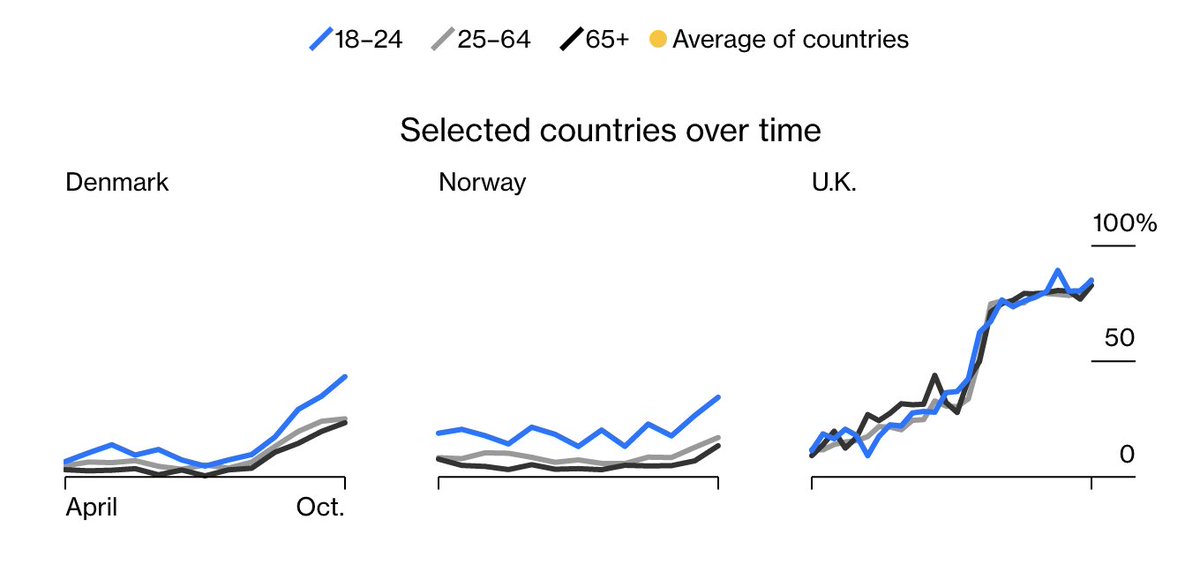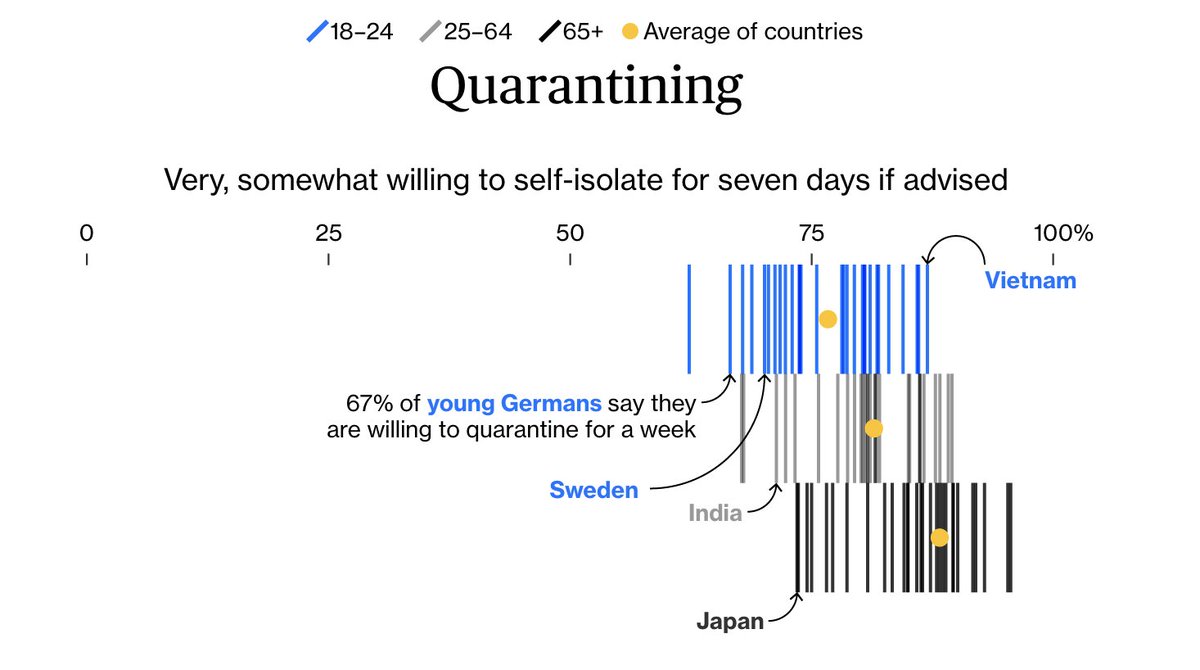
In the latest wave of coronavirus infections, young people have been blamed for spreading the virus by partying too much and breaking social distancing rules.
But that's not entirely fair trib.al/4goZL4Z
But that's not entirely fair trib.al/4goZL4Z
New coronavirus cases are still highest among young people in some places, including the U.S. and U.K. trib.al/4goZL4Z 

Generation Z are adrift by definition, living in ways that heighten their risk of infection:
🏢Many live in shared accommodation or densely-populated dorms
🍺More likely to work in public-facing roles such as waiters and bar staff trib.al/4goZL4Z
🏢Many live in shared accommodation or densely-populated dorms
🍺More likely to work in public-facing roles such as waiters and bar staff trib.al/4goZL4Z

Data tracking people’s attitudes during the pandemic reveal a more nuanced picture.
Lots of young adults are doing their part to follow social distancing rules, and that they’re closer in alignment with their elders than is commonly assumed trib.al/4goZL4Z
Lots of young adults are doing their part to follow social distancing rules, and that they’re closer in alignment with their elders than is commonly assumed trib.al/4goZL4Z

When it comes to regularly wearing a face mask, young adults have outdone their older counterparts:
😷18-24: 74%
😷65+: 50% trib.al/4goZL4Z
😷18-24: 74%
😷65+: 50% trib.al/4goZL4Z

Mask use rose across all age groups after governments passed mask mandates, as seen in the U.K.
In Nordic nations, where governments took longer to pass rules or didn’t make any recommendations, young people have been more open to adapting their behavior trib.al/4goZL4Z
In Nordic nations, where governments took longer to pass rules or didn’t make any recommendations, young people have been more open to adapting their behavior trib.al/4goZL4Z

Young adults’ readiness to quarantine isn’t that different from their parents’ age group.
Even in regions that never had a central lockdown, more than 60% of young people are very or somewhat willing to quarantine if they were told to by a contact tracer trib.al/4goZL4Z
Even in regions that never had a central lockdown, more than 60% of young people are very or somewhat willing to quarantine if they were told to by a contact tracer trib.al/4goZL4Z

The majority of young people told pollsters they’ve tried to avoid crowds during the pandemic, more than commonly imagined.
While their overall average lags older age groups, their changes in attitude broadly track those seen in other generations trib.al/4goZL4Z
While their overall average lags older age groups, their changes in attitude broadly track those seen in other generations trib.al/4goZL4Z

While there’s no doubt some young people have engaged in risky behavior, this is overshadowing how many are trying to be careful for everyone’s sake.
Given the psychological toll this pandemic is having on Gen Z, they will need to feel supported trib.al/4goZL4Z
Given the psychological toll this pandemic is having on Gen Z, they will need to feel supported trib.al/4goZL4Z

One in four 18 to 24 year olds have reported feeling down, depressed or hopeless most days, compared to just one in 10 for those 65 and older.
That may help explain why a minority are throwing caution to the wind trib.al/4goZL4Z
That may help explain why a minority are throwing caution to the wind trib.al/4goZL4Z

Let's remember the context, too. Over summer, lockdowns eased & governments were encouraging people to get out to help restart the economy.
That makes disparaging Gen Z feel like a convenient way to shift responsibility for the policy failures of leaders trib.al/4goZL4Z
That makes disparaging Gen Z feel like a convenient way to shift responsibility for the policy failures of leaders trib.al/4goZL4Z

As more activities move indoors, cases, hospitalizations & deaths are likely to worsen.
Rather than engaging in generational finger-pointing, leaders need to build a united front with farsighted strategies that protect & support citizens of all ages trib.al/4goZL4Z
Rather than engaging in generational finger-pointing, leaders need to build a united front with farsighted strategies that protect & support citizens of all ages trib.al/4goZL4Z

• • •
Missing some Tweet in this thread? You can try to
force a refresh













